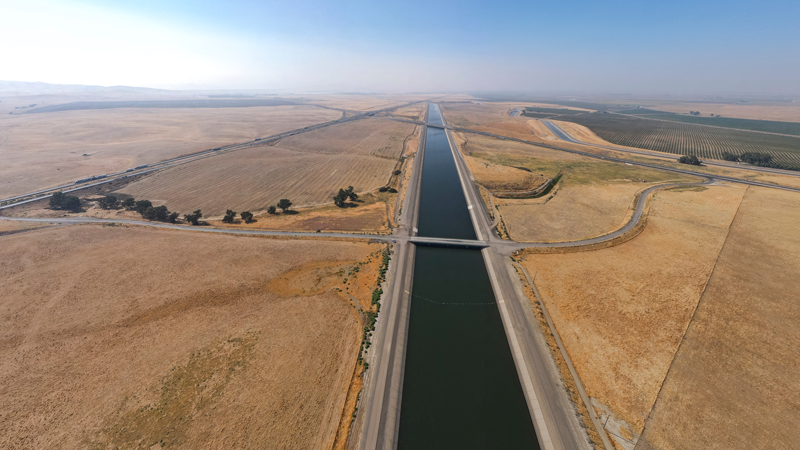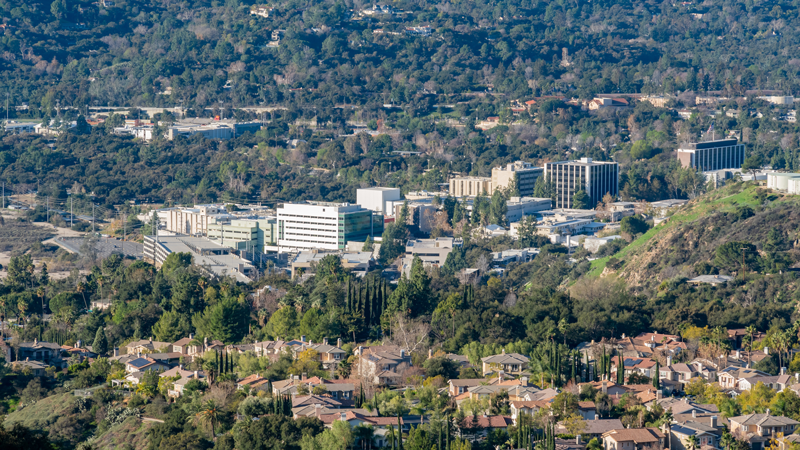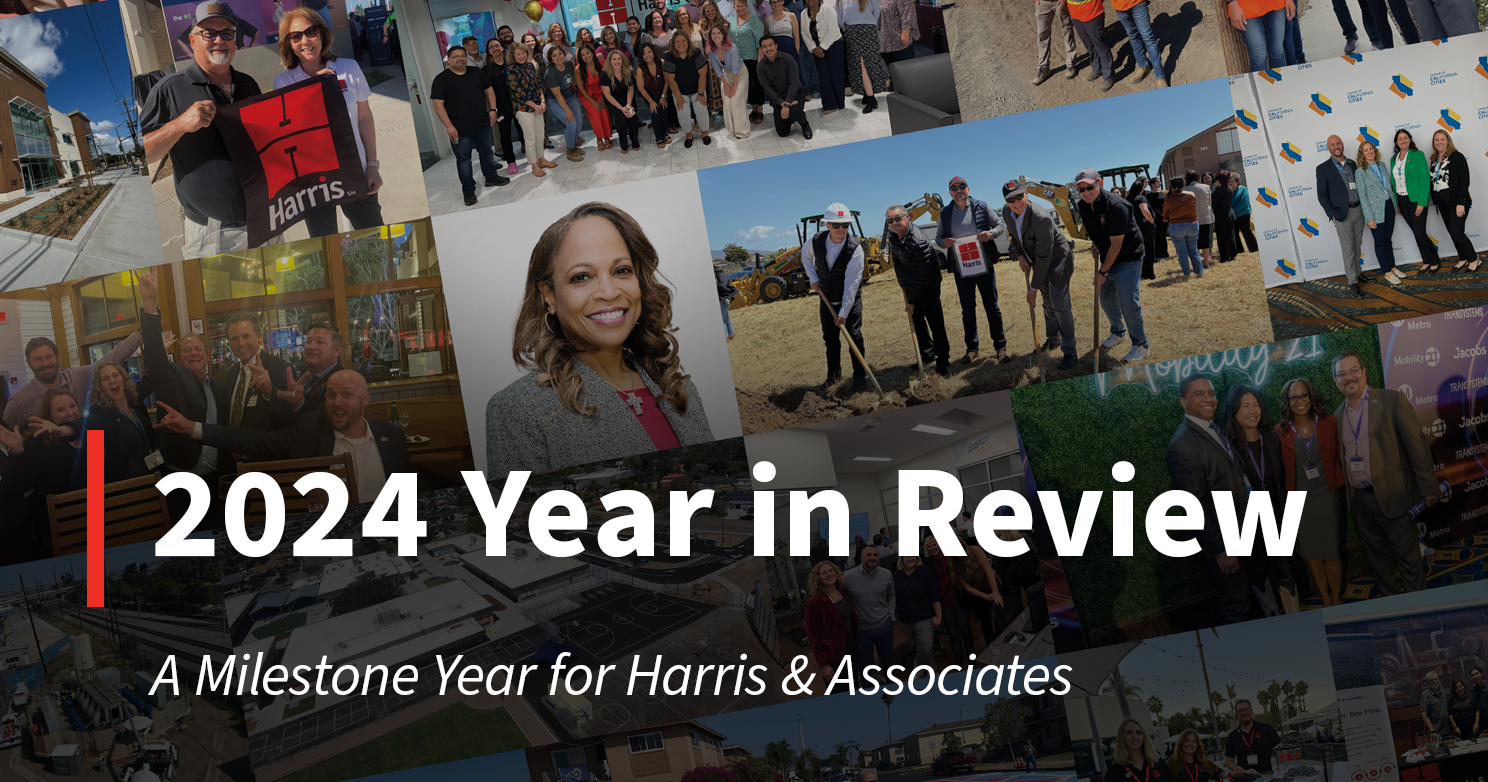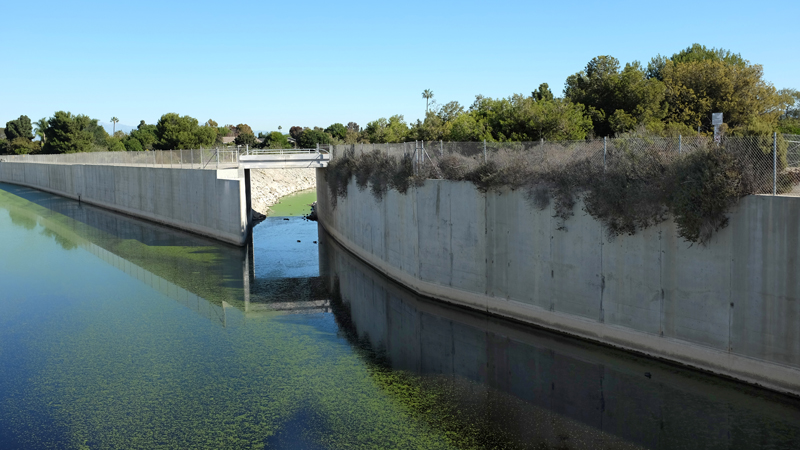4.6 minute read
August 13, 2024
Just 20 miles north from our Salinas office is the City of Watsonville – a beloved community recognized for its rich cultural history, lush wetlands and slough system, and fertile agricultural land that produces an array of crops, notably apples and berries, that serve the world. The City is commonly known as the Strawberry Capital of the World.
The City of Watsonville’s agricultural prominence has required the city to evolve and cultivate its own change. Over the years, the City has embarked on several initiatives to preserve its rich history and heritage, while also addressing infrastructure needs, climate change and resiliency, and the community’s safety and well-being. Harris & Associates has been a pivotal partner in these efforts, providing a wide range of services over the years.
Environmental Work That Matters
Climate change is causing extreme fluctuations in temperature and rainfall, which impacts agricultural production, food quality and availability, infrastructure, and as a result the health and well being of the City of Watsonville’s community at large. The City responded to this challenge proactively by adopting a policy to achieve net negative emissions by 2030.
Our Harris & Associates team collaborated closely with city staff to develop the City of Watsonville’s climate planning framework. This included preparing the City’s first Local Hazard Mitigation Plan (LHMP) and Climate Action and Adaptation Plan (CAAP). These disparate analyses were incorporated into the General Plan to meet State mandates and provide a comprehensive approach to addressing climate change.
The City of Watsonville benefits from this approach by receiving a coordinated response that safeguards community resources and aligns with state mandates. The development of the LHMP and CAAP was a crucial step in assessing Watsonville's risk from natural hazards, including those induced by climate change such as extreme heat and sea level rise. Harris utilized advanced geospatial and statistical methods to project these climate risks and their potential impacts on people, facilities, and natural systems. This comprehensive analysis combined with extensive public participation provided mitigation and adaptation strategies that genuinely reflect community needs and priorities.
Climate Action and Adaptation planning was one part of the equation. The second was tangibly managing the impacts of extreme climate change; and in the case of the City of Watsonville, excessive rainfall became a concern. Well-maintained sewer systems help communities avoid extensive infrastructure repair, protect aquatic ecosystems, and avoid health crises. Harris assisted the City with a complex sewer infrastructure project. The scope of work involved upsizing 3,155 linear feet of existing Vitrified Clay Pipe (VCP) trunk sewers. The project implemented pipe reaming trenchless technology to minimize impacts on home foundations, businesses, and sensitive creek environments. Despite initial challenges, including record rainfall and equipment issues, the project was successfully completed, demonstrating Harris' technical expertise and problem-solving capabilities.
Keeping Watsonville’s Streets and Trails Safe
As a trusted partner to the City of Watsonville, Harris & Associates worked with the City to address the safety of streets and trails with two initiatives: 1) A pavement condition assessment and analysis of the City’s entire street system including public parking lots that will result in a formal Pavement Management Program (PMP) Update; and 2) a multi-year assignment as the City’s Pavement Program Manager to coordinate with the City on identifying and managing a program of street maintenance and improvement projects for the next 5 years. The PMP Update will identify a Pavement Condition Index (PCI) score of each street (coordinated with the City’s StreetSaver® asset management program) by which to analyze and identify appropriate pavement repairs to be identified in future City paving projects. The PMP Update will include an audit and integrating of historical maintenance data, budget analysis and planning, defining budget needs and developing a five-year expenditure program. The PMP Update will be evaluated in consideration of equity among the various City stakeholders through a public engagement effort.
The PMP Update to be ultimately approved and adopted by the City Council will identify a 5-Year Program to best utilize the City’s revenue and to capitalize on its Measure R community investment tax to make strategic and important public improvements. Moving forward, Harris will continue working as the Pavement Program Manager to coordinate with City staff on delivering these important projects to improve the quality of life for the Watsonville community in a very real and directly visible way – by paving City streets!
Additionally, Harris is helping the City provide safe, alternative transportation, including the Lee Road Trail project and a portion of the Monterey Bay Sanctuary Scenic Trail (MBSST), which establishes a continuous paved multi-use trail along the Santa Cruz Branch Rail Line for the length of Santa Cruz County. This project implemented Segment 18 of the MBSST network, which includes 1.20 miles along the inland rail right-of-way from Lee Road to Walker Street. Harris’ tasks included: design services, planning for four railroad crossings and a crossing under Highway 1; assisting with land acquisitions and required permits; and coordinating with Caltrans, California Public Utilities Commission, and the railroad operator.
Through several comprehensive projects, Harris & Associates has demonstrated our ability to serve as a trusted advisor and deliver end-to-end services that address the complex needs of the City of Watsonville. From climate adaptation to infrastructure upgrades, Harris and the City play a crucial role in enhancing the City’s resilience and sustainability. We’re proud to partner with the City of Watsonville to ensure the community is well-prepared to face future challenges while maintaining a high quality of life for its residents.
Authors
Kate Elliott
Frank S. Lopez, PE, QSD
Darin Neufeld, AICP
Marcus Fuller, PE, PLS
Source
Harris & Associates
Markets
Water
Transportation
Municipal
Services
Community Development + Housing
Municipal Finance
Environmental Planning + Compliance
Civil Design
Program Management
Construction Management
Categories
Projects
Local Hazard Mitigation Planning
Climate Action and Adaptation Plan















